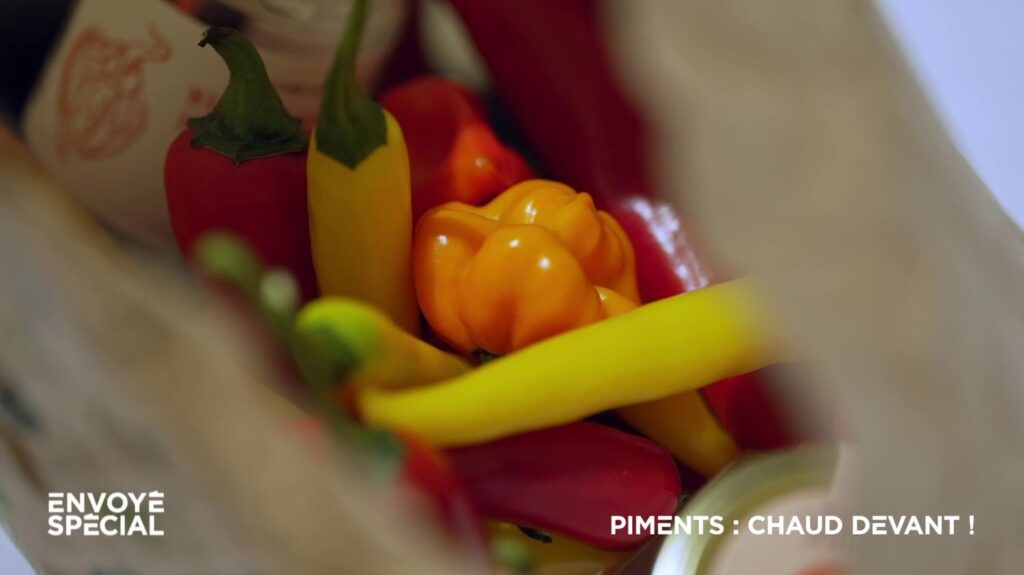Published
Reading time: 2min – video: 3min
3 minutes
Peppers of all kinds are increasingly present on our plates… To find out more about these explosive fruits, “Special Envoy” met a few hotheads and a computer scientist converted into a passionate producer.
“Special Envoy” attended an extraordinary event on September 29. A strange fever gripped a town in Finistère on a beautiful Saturday afternoon. In the Spézet sports hall (whose name sounds a bit like Espelette) the 2nd chili-eating championship is held. Six rounds, 40 candidates, only one winner.
The hotheads came from all over the region, but many had their eyes bigger than their stomachs. One by one, the candidates, on fire, throw in the towel to rush into a can of whipped cream. Because the only antidotes to chili are fat (and waiting for it to pass).
But what is it that is so spicy about chili peppers? In the Marne, in Prunay, a computer scientist converted into a grower-collector of these surprising fruits gives some explanations. What stings is first the internal white membrane, the “chili pepper placenta”. It is filled with capsaicin, the molecule responsible for the burning sensation. There are also the seeds. And when we find white in the flesh of the pepper, it’s because“it stings well”. “In fact, when you eat it, you get a warm, burning sensation, and when it fades, the body releases endorphins, specifies Stéphane Bour. And that’s when we say to ourselves, ‘Hey, I’d like to have a little more’…” Did you say addictive? He who hated pepper when he was younger now grows more than a hundred varieties.
Among them, why do some have a wrinkled appearance? “The uglier a pepper, the more it stings“, summarizes Stéphane Bour. Like the Carolina Reaper. This aspect comes from water stress, the producer explains: “The more the peppers are stressed, the more they lack water, on the verge of dying, the more they will load up in capsaicin.”
On the Scoville scale, specially invented to classify peppers according to their capsaicin levels, the Carolina Reaper is the champion: 2 million Scoville units, compared to only 1,000 for the harmless Biquinho from Brazil, sweet as a pepper.
Excerpt from “Chili peppers: hot in front!”, to see in “Special correspondent” October 30, 2025.
> Replays of France Télévisions news magazines are available on the franceinfo website, section “The broadcasts“.

/2025/10/30/envoye-special-qu-est-ce-qui-pique-dans-le-piment-69039a71d89a6091970103.jpg)

